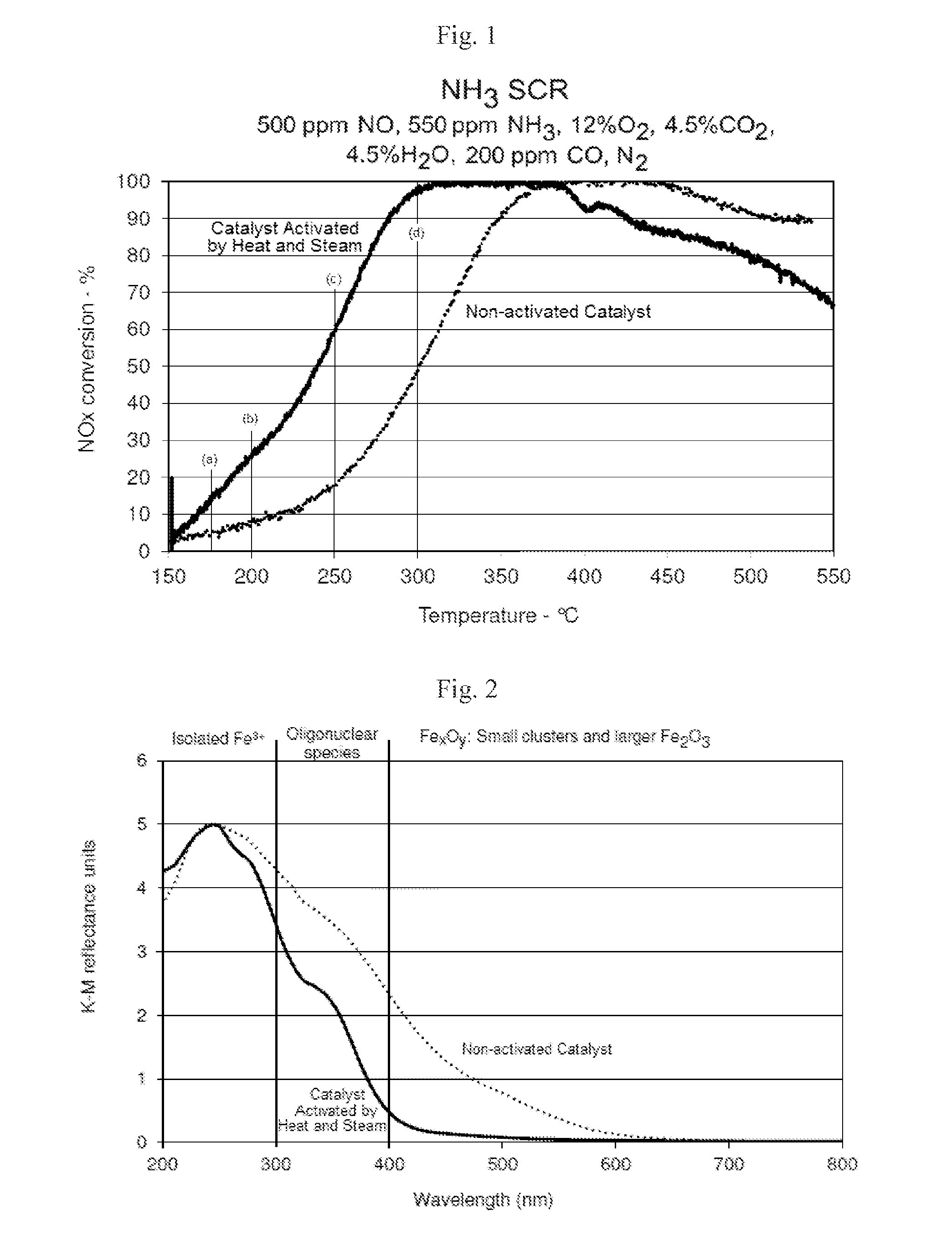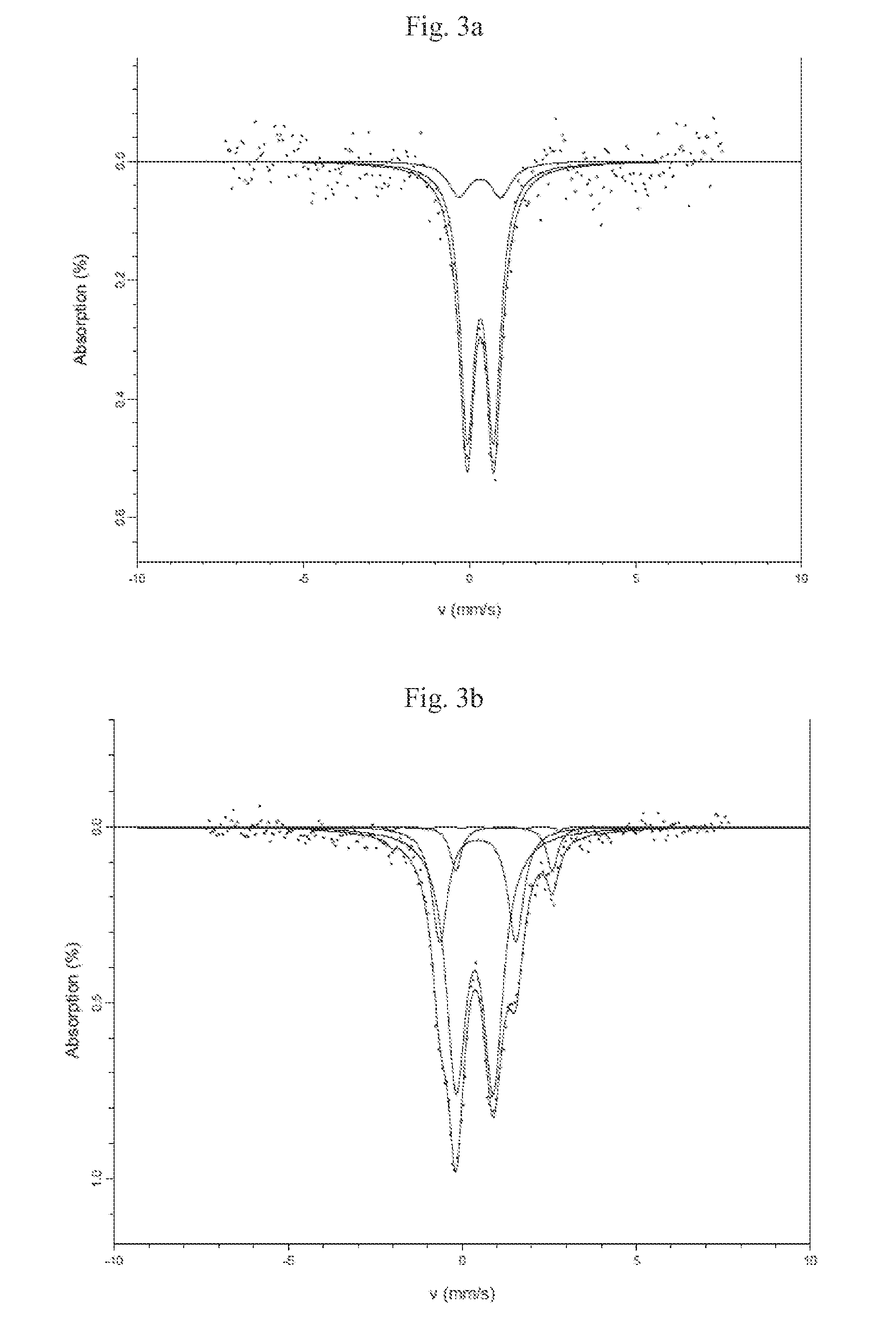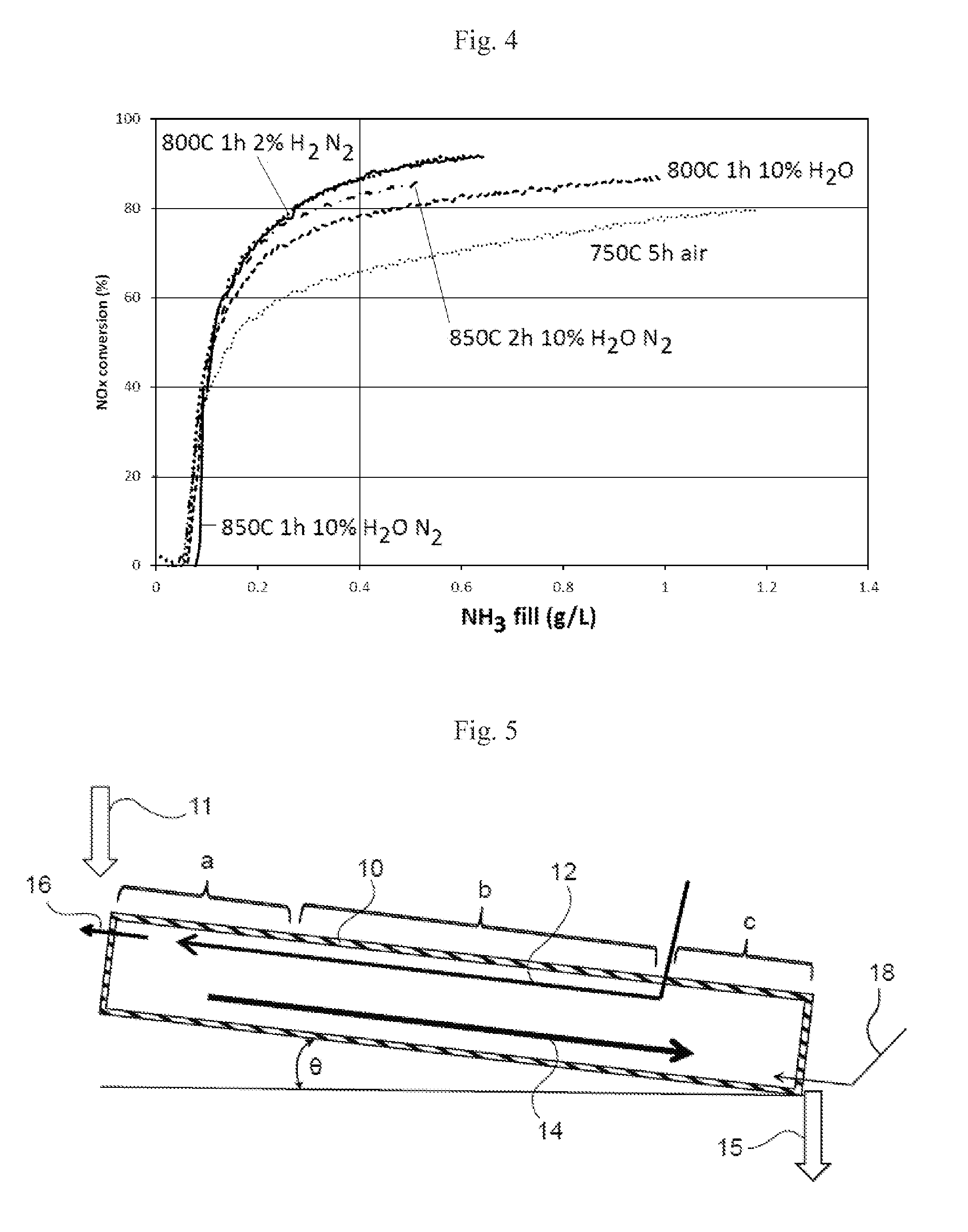Scr catalysts having improved low temperature performance, and methods of making and using the same
- Summary
- Abstract
- Description
- Claims
- Application Information
AI Technical Summary
Benefits of technology
Problems solved by technology
Method used
Image
Examples
example 1
[0048]3 wt % iron was added to a commercially available ferrierite zeolite by spray drying the ferrierite zeolite with ammonium Fe (III) oxalate in solution so as to give the desired Fe loading. One portion of the resulting iron-containing ferrierite was dried at 105° C. overnight and was activated under a flow of10% steam in nitrogen at 800° C. for 1 hour. This material was not subjected to calcination. Another portion of the iron-containing ferrierite was calcined at 500° C. in air for 2 hours to use as reference.
[0049]In the examples that follow, powder samples of the catalysts were obtained by pelletizing the original samples, crushing the pellets and then passing the powder obtained through a 255 and 350 micron sieves to obtain a powder having particle size between 255 and 350 microns. The powder samples were loaded into a Synthetic Catalyst Activity Test (SCAT) reactor and tested using the following synthetic diesel exhaust gas mixture (at inlet) including nitrogenous reductan...
example 2
[0056]An iron ferrierite was made as described above by combining 3 wt % iron with a commercially available ferrierite zeolite by spray drying the ferrierite zeolite with ammonium Fe (II) sulphate in solution so as to give the desired Fe loading. A series of powder samples were then prepared by treating the iron ferrierite at the temperatures and atmospheric conditions as shown in Table 1. Samples were prepared for determining their catalytic activity by coating the powder onto ceramic cores.
TABLE 1Conditions for Preparing Modified Iron ZeoliteTemperature (° C.)TimeAtmosphereTreatment8001 h2% H2 + N2Thermal8001 h10% H2O + N2Hydrothermal8501 h10% H2O + N2Hydrothermal8502 h10% H2O + N2Hydrothermal7505 hAirCalcination (Reference)
[0057]The reference sample was prepared by calcination at 750° C. because the ferrierite zeolite was treated with ammonium Fe (II) sulphate and a higher temperature was needed to remove the sulfate.
[0058]The test conditions for the data shown in FIG. 4 were NOx...
PUM
| Property | Measurement | Unit |
|---|---|---|
| Temperature | aaaaa | aaaaa |
| Temperature | aaaaa | aaaaa |
| Temperature | aaaaa | aaaaa |
Abstract
Description
Claims
Application Information
 Login to View More
Login to View More - R&D
- Intellectual Property
- Life Sciences
- Materials
- Tech Scout
- Unparalleled Data Quality
- Higher Quality Content
- 60% Fewer Hallucinations
Browse by: Latest US Patents, China's latest patents, Technical Efficacy Thesaurus, Application Domain, Technology Topic, Popular Technical Reports.
© 2025 PatSnap. All rights reserved.Legal|Privacy policy|Modern Slavery Act Transparency Statement|Sitemap|About US| Contact US: help@patsnap.com



